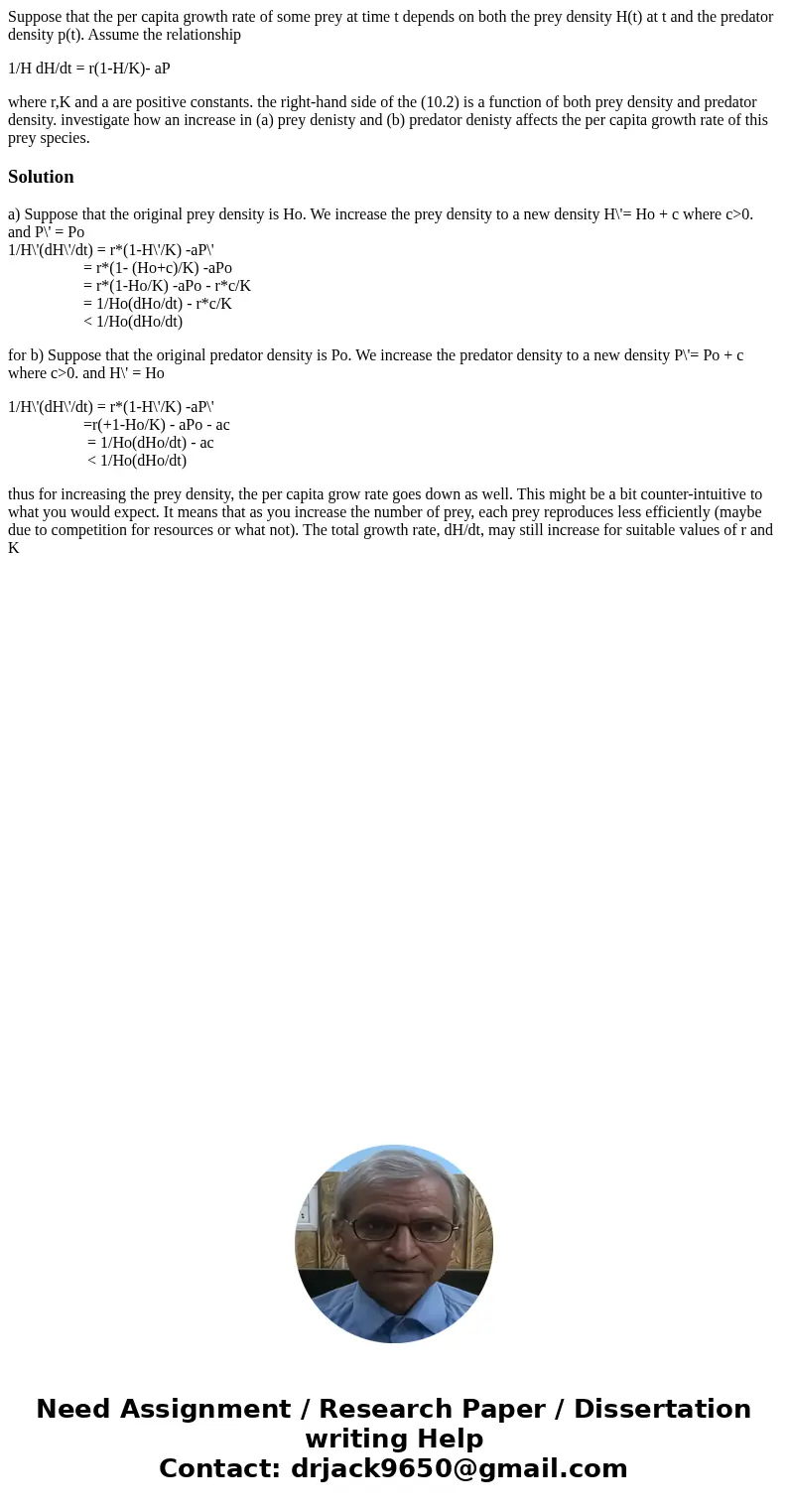Suppose that the per capita growth rate of some prey at time
Suppose that the per capita growth rate of some prey at time t depends on both the prey density H(t) at t and the predator density p(t). Assume the relationship
1/H dH/dt = r(1-H/K)- aP
where r,K and a are positive constants. the right-hand side of the (10.2) is a function of both prey density and predator density. investigate how an increase in (a) prey denisty and (b) predator denisty affects the per capita growth rate of this prey species.
Solution
a) Suppose that the original prey density is Ho. We increase the prey density to a new density H\'= Ho + c where c>0. and P\' = Po
1/H\'(dH\'/dt) = r*(1-H\'/K) -aP\'
= r*(1- (Ho+c)/K) -aPo
= r*(1-Ho/K) -aPo - r*c/K
= 1/Ho(dHo/dt) - r*c/K
< 1/Ho(dHo/dt)
for b) Suppose that the original predator density is Po. We increase the predator density to a new density P\'= Po + c where c>0. and H\' = Ho
1/H\'(dH\'/dt) = r*(1-H\'/K) -aP\'
=r(+1-Ho/K) - aPo - ac
= 1/Ho(dHo/dt) - ac
< 1/Ho(dHo/dt)
thus for increasing the prey density, the per capita grow rate goes down as well. This might be a bit counter-intuitive to what you would expect. It means that as you increase the number of prey, each prey reproduces less efficiently (maybe due to competition for resources or what not). The total growth rate, dH/dt, may still increase for suitable values of r and K

 Homework Sourse
Homework Sourse